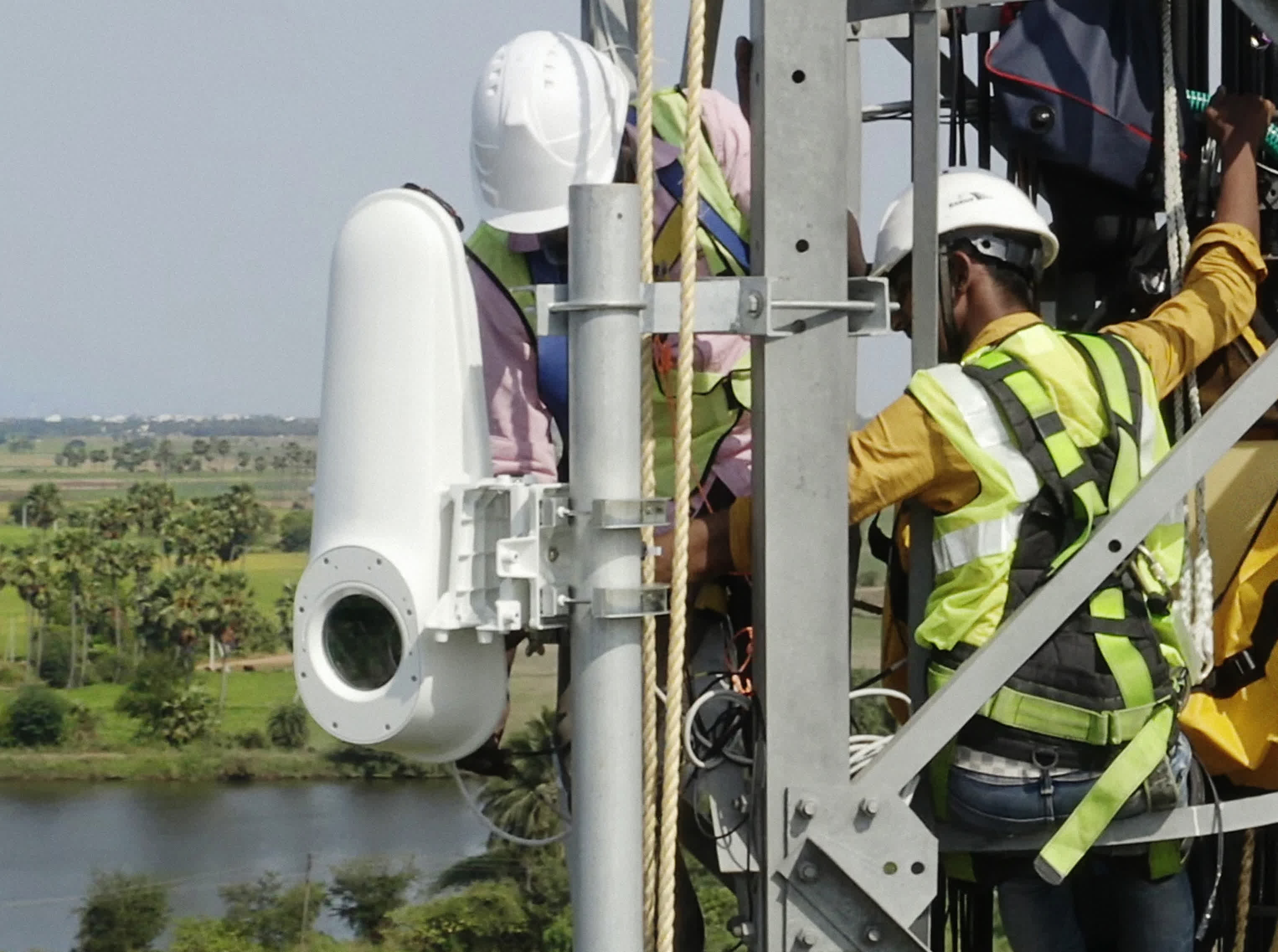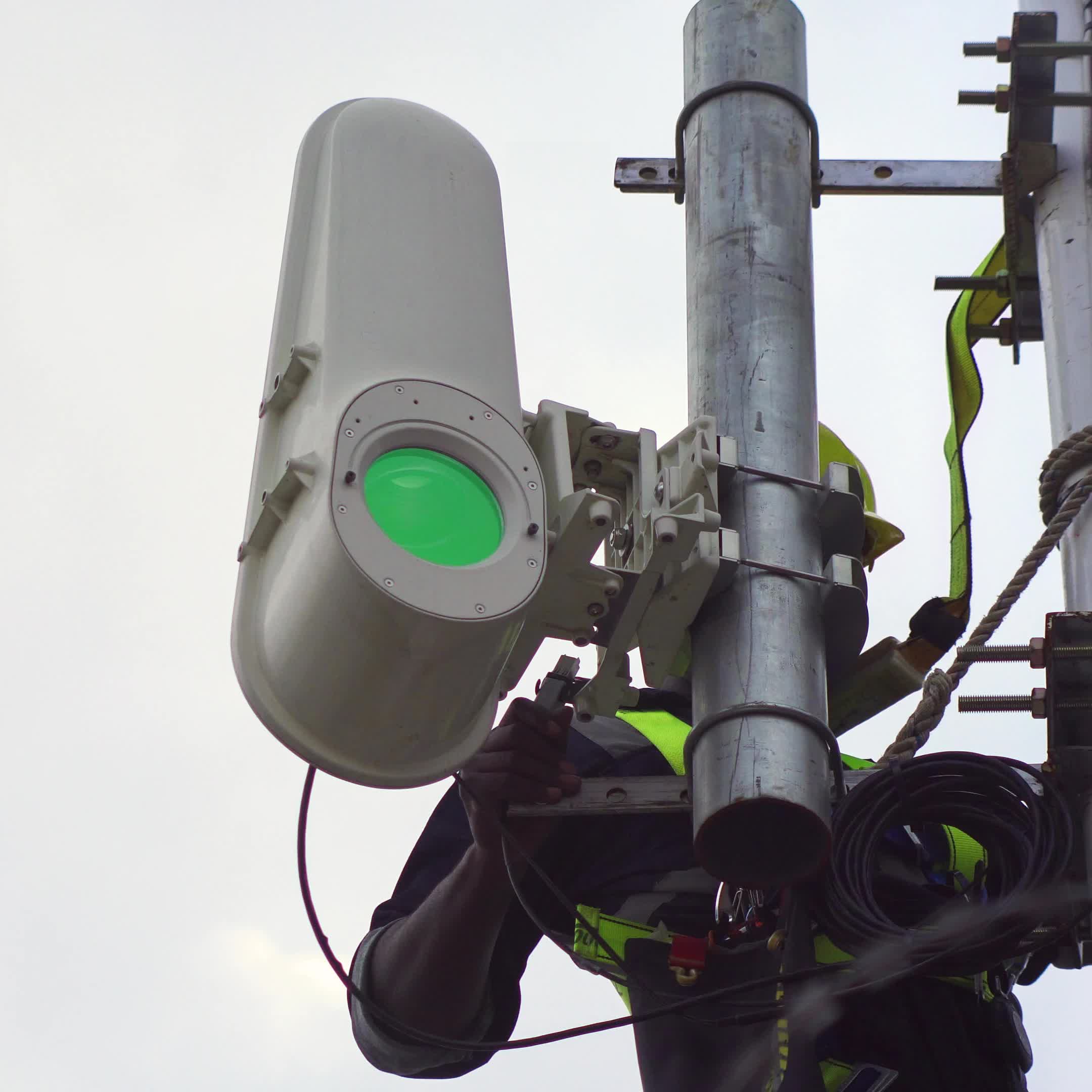Why it matters: For years, companies like Google and Facebook have been exploring ways to bring Internet connectivity solutions to people in remote areas around the world. The latest attempt uses 20 Gbps wireless optical links that were developed for Google's Project Loon to connect communities where fiber infrastructure is too complex and expensive to implement.

Google has explored plenty of daring projects over the years, but most of them never see any commercial implementation beyond a few trial runs. That's because the company has cultivated a culture of embracing failure as a way to test ideas and quickly kill the terrible ones before they suck in too many resources.
A notable example comes to mind -- Project Loon, which was dissolved in January after Google found that sending helium balloons into the stratosphere to distribute wireless internet to more than a billion people living in remote areas wasn't commercially viable.

However, some underlying technology has been preserved for use in other projects at Google's X labs. Specifically, the company has been using Free Space Optical Communications (FSOC) links for a little-known experiment called Project Taara.
The idea behind Taara is that expensive fiber optic installations can be replaced with 20 Gbps FSOC links that beam connectivity over short distances. The project has already seen a few pilot implementations in Kenya and India, and today the company revealed that it's also been using this wireless optical link to connect two communities on the sides of the Congo River -- Brazzaville in the Republic of Congo and Kinshasa in the Democratic Republic of Congo, totaling over 17 million people.
Baris Erkmen, the Project Taara lead, says the link successfully transmitted around 700 terabytes of data in 20 days of operation with a respectable 99.9 percent uptime. Making this optical tech work over a distance of 3 miles (4.8 kilometers) is no small task, as it requires constant minute adjustments to align the laser beam with the receiving node.
To that end, the nodes are placed high up and can automatically adjust their mirror system to maintain a steady connection even with optical interference from birds and changes in weather conditions. The Project Taara team has spent countless hours improving the reliability of FSOC nodes to the point where the engineers are confident they can operate with minimal service interruptions.
As you'd expect, this system wouldn't work in areas where there's constant fog, such as the San Francisco Bay area. That's why the Project Taara team chose to conduct these tests in a place where the climate allows for a relatively clear line of sight between the optical terminals.

However, the cost of this system is five times lower than trying to run a fiber optic cable 250 miles (400 kilometers) around the river, or laying the infrastructure needed for 5G connectivity. And while it won't be suitable for every location, it does have the potential to connect hundreds of millions of people in remote areas to the internet in a more cost-effective way. Red areas in the above map indicate places where Google thinks the technology can be implemented for over 99 percent uptime.
Overall, the lesson learned by Taara's engineers is that you can sacrifice a small amount of signal reliability to bring fiber-like Internet speeds to communities of people that would otherwise not be able to afford the cost of a wired backbone. To them, this new technology would be indistinguishable from the traditional broadband that most of us enjoy in sprawling urban centers.
The Project Taara team says it's currently exploring partnerships with governments and telecom operators to accelerate development and implement the wireless optical link in more areas around the world.
https://www.techspot.com/news/91299-alphabet-project-taara-beamed-700tb-fiber-like-internet.html